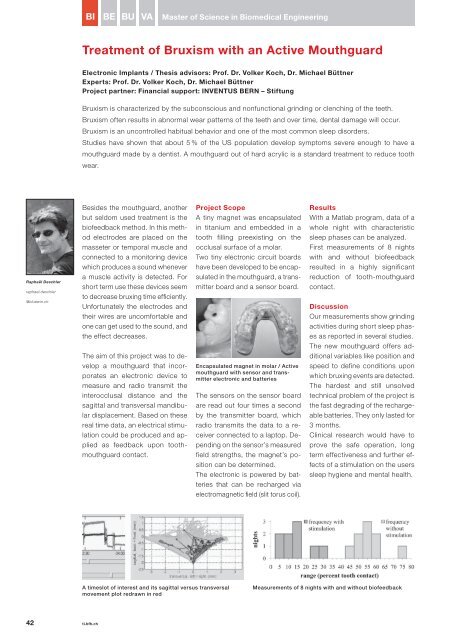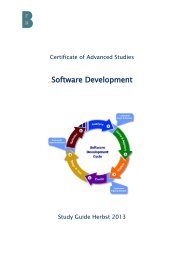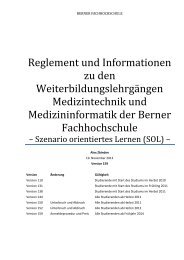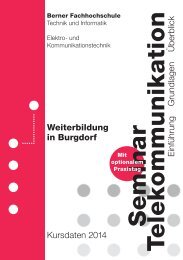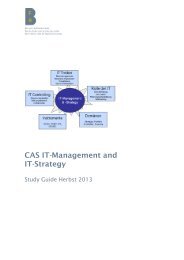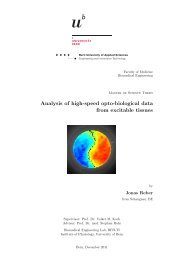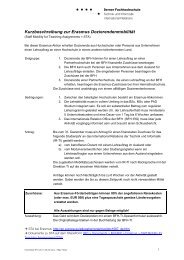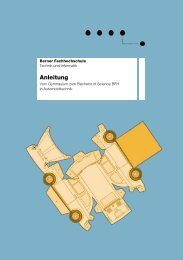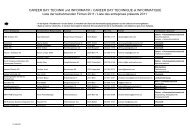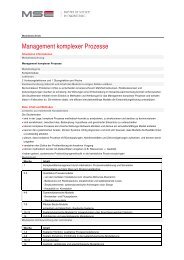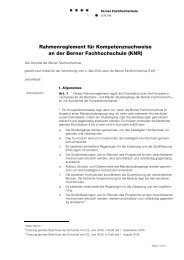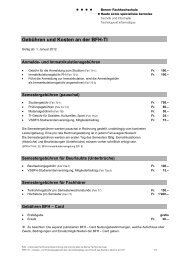Dernière édition Attention: Le pdf pèse environ 17 - BFH-TI - Berner ...
Dernière édition Attention: Le pdf pèse environ 17 - BFH-TI - Berner ...
Dernière édition Attention: Le pdf pèse environ 17 - BFH-TI - Berner ...
- Keine Tags gefunden...
Erfolgreiche ePaper selbst erstellen
Machen Sie aus Ihren PDF Publikationen ein blätterbares Flipbook mit unserer einzigartigen Google optimierten e-Paper Software.
BIBEBUVAMaster of Science in Biomedical EngineeringTreatment of Bruxism with an Active MouthguardElectronic Implants / Thesis advisors: Prof. Dr. Volker Koch, Dr. Michael BüttnerExperts: Prof. Dr. Volker Koch, Dr. Michael BüttnerProject partner: Financial support: INVENTUS BERN – StiftungBruxism is characterized by the subconscious and nonfunctional grinding or clenching of the teeth.Bruxism often results in abnormal wear patterns of the teeth and over time, dental damage will occur.Bruxism is an uncontrolled habitual behavior and one of the most common sleep disorders.Studies have shown that about 5 % of the US population develop symptoms severe enough to have amouthguard made by a dentist. A mouthguard out of hard acrylic is a standard treatment to reduce toothwear.Raphaël Deschlerraphael.deschler@bluewin.chBesides the mouthguard, anotherbut seldom used treatment is thebiofeedback method. In this methodelectrodes are placed on themasseter or temporal muscle andconnected to a monitoring devicewhich produces a sound whenevera muscle activity is detected. Forshort term use these devices seemto decrease bruxing time effi ciently.Unfortunately the electrodes andtheir wires are uncomfortable andone can get used to the sound, andthe effect decreases.The aim of this project was to developa mouthguard that incorporatesan electronic device tomeasure and radio transmit theinterocclusal distance and thesagittal and transversal mandibulardisplacement. Based on thesereal time data, an electrical stimulationcould be produced and appliedas feedback upon toothmouthguardcontact.Project ScopeA tiny magnet was encapsulatedin titanium and embedded in atooth filling preexisting on theocclusal surface of a molar.Two tiny electronic circuit boardshave been developed to be encapsulatedin the mouthguard, a transmitterboard and a sensor board.Encapsulated magnet in molar / Activemouthguard with sensor and transmitterelectronic and batteriesThe sensors on the sensor boardare read out four times a secondby the transmitter board, whichradio transmits the data to a receiverconnected to a laptop. Dependingon the sensor’s measuredfield strengths, the magnet’s positioncan be determined.The electronic is powered by batteriesthat can be recharged viaelectromagnetic field (slit torus coil).ResultsWith a Matlab program, data of awhole night with characteristicsleep phases can be analyzed.First measurements of 8 nightswith and without biofeedbackresulted in a highly significantre duction of tooth-mouthguardcontact.DiscussionOur measurements show grindingactivities during short sleep phasesas reported in several studies.The new mouthguard offers additionalvariables like position andspeed to define conditions uponwhich bruxing events are detected.The hardest and still unsolvedtechnical problem of the project isthe fast degrading of the rechargeablebatteries. They only lasted for3 months.Clinical research would have toprove the safe operation, longterm effectiveness and further effectsof a stimulation on the userssleep hygiene and mental health.A timeslot of interest and its sagittal versus transversalmovement plot redrawn in redMeasurements of 8 nights with and without biofeedback42 ti.bfh.ch


